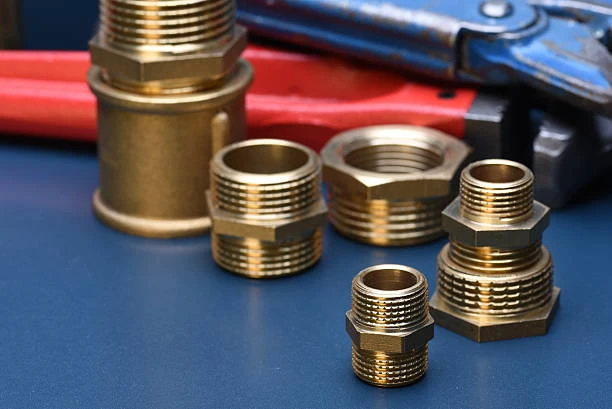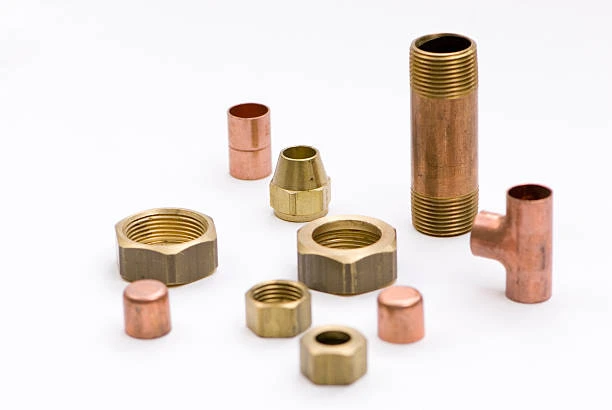As the world increasingly embraces clean energy technologies, there is growing interest in how this transition will impact various industries, including plumbing, Clean energy sources, such as solar, wind, and geothermal, are shaping the way energy is generated and consumed, leading to changes in material choices, systems, and technologies across different sectors, Brass piping and fittings systems, widely used in plumbing and HVAC applications, are also affected by the clean energy shift. This article explores how clean energy impacts brass piping and fittings, examining the benefits and challenges associated with the integration of these systems in a cleaner, more sustainable world.
The Role of Brass Piping and Fittings in Modern Plumbing Systems
Brass piping and fittings are favored for their ability to handle high pressures and temperatures, as well as their longevity. They are also highly resistant to rust, making them ideal for use in environments with varying water conditions, including hard or corrosive water. With the rise of clean energy initiatives, brass continues to play an important role in sustainable plumbing systems, especially in applications related to renewable energy.
Clean Energy and Its Influence on Plumbing Systems
The move toward clean energy has significant implications for plumbing systems, particularly those involving heating and cooling solutions. Renewable energy systems like solar thermal heating and geothermal heating require efficient plumbing infrastructure to transfer energy effectively. In these systems, brass piping and fittings are often the material of choice due to their high thermal conductivity and resistance to damage from temperature fluctuations.
In solar thermal systems, for example, brass piping is us to transport heated fluid from solar collectors to water storage tanks, where it is used for domestic hot water or space heating. Brass’s ability to withstand the higher temperatures and pressures generated by solar systems makes it an ideal material for such applications.
Similarly, geothermal heating and cooling systems, which utilize the stable temperatures of the earth to regulate indoor climates, often employ brass fittings to connect underground loops to heat pumps. These fittings are crucial for ensuring that the system remains leak-free and functions efficiently over its lifespan.
Sustainability Benefits of Brass in Clean Energy Systems
The use of brass piping and fittings in clean energy systems provides several sustainability benefits that align with the goals of renewable energy adoption. Some of the key advantages include:
- Energy Efficiency: Brass has excellent thermal conductivity, which enhances the efficiency of heat transfer in systems such as solar thermal and geothermal heating. This improves the overall energy performance of the system, reducing energy consumption and lowering greenhouse gas emissions.
- Durability and Longevity: Brass is a durable material that can last for decades, even in demanding environments. Its resistance to corrosion, especially in water-based systems, ensures long-term reliability with minimal maintenance. This longevity reduces the need for frequent replacements, which in turn minimizes material waste and supports sustainability.
- Recyclability: Brass is fully recyclable, and the recycling process requires less energy compared to the production of new materials. This reduces the environmental impact of manufacturing and aligns with the principles of a circular economy, where materials are reus and repurpos instead of being discard.
- Reduced Risk of Contamination: Lead-free brass fittings are commonly us in clean energy plumbing systems to meet safety standards for drinking water and reduce the risk of lead contamination. This not only protects public health but also supports environmental sustainability by preventing the release of harmful substances into water sources.

Challenges for Brass Piping in Clean Energy Systems
Despite its many benefits, there are also challenges to consider when using brass piping and fittings in clean energy systems. These challenges include:
- Material Costs: Brass is generally more expensive than other materials, such as plastic or steel. While it offers superior performance and longevity, the higher upfront cost can be a barrier for some projects, especially those with tight budgets. However, the long-term benefits of brass, including its durability and recyclability, often outweigh the initial expense.
- Compatibility with Emerging Technologies: As new clean energy technologies emerge, it is essential to ensure that brass piping and fittings are compatible with these systems. For instance, brass may not always be suitable for use in systems that require non-metallic components due to specific chemical or environmental considerations. Continuous innovation in material science is necessary to address these compatibility issues.
- Potential for Corrosion in Certain Conditions: While brass is highly resistant to corrosion, certain conditions, such as exposure to ammonia or chloramines, can lead to dezincification, a process where zinc leaches out of the brass, weakening the material. Careful consideration of the system’s operating environment is necessary to avoid this issue, and alternatives such as stainless steel or specialized coatings may be required in some cases.
Innovations in Brass Piping for Clean Energy Applications
To meet the growing demand for sustainable plumbing solutions in clean energy applications, manufacturers are continually innovating and improving brass piping and fittings. These innovations include:
- Lead-Free Brass Alloys: With regulations requiring lead-free materials for drinking water systems, manufacturers have developed lead-free brass alloys that maintain the material’s strength and corrosion resistance while eliminating the health risks associated with lead. These alloys are widely us in both traditional plumbing systems and renewable energy applications.
- Enhanced Coatings and Treatments: To further increase the longevity of brass fittings in challenging environments, manufacturers are developing advanced coatings and surface treatments that provide additional protection against corrosion. These coatings extend the lifespan of brass components in systems exposed to harsh water conditions or extreme temperatures.
- High-Pressure and High-Temperature Applications: Brass piping and fittings designed for high-pressure and high-temperature applications are becoming more common in clean energy systems. These components are specifically engineered to handle the demands of systems like solar thermal and geothermal heating, where elevated temperatures and pressures are the norm.
Future Trends for Brass Piping in Clean Energy Systems
As clean energy technologies continue to evolve, brass piping and fittings will likely play an even more significant role in the development of sustainable plumbing solutions. Some future trends include:
- Integration with Smart Technology: The rise of smart plumbing systems, which use sensors and automation to optimize water and energy use, could lead to new applications for brass fittings. Brass components integrated with sensors could help monitor system performance and detect issues such as leaks or pressure drops in real time.
- Increased Use in District Heating Systems: District heating, where heat is generat centrally and distributed to multiple buildings, is gaining popularity as a clean energy solution. Brass piping and fittings could be instrumental in connecting buildings to district heating networks, thanks to their durability and ability to handle high temperatures and pressures.
- Continued Focus on Lead-Free Solutions: As environmental and health regulations become stricter, the demand for lead-free brass alloys will continue to grow. This will drive further innovation in the development of safe, sustainable brass components for clean energy applications.
Conclusion
The clean energy transition is influencing many industries, including plumbing and HVAC systems. Brass piping and fittings play a crucial role in supporting the shift to renewable energy by offering durability, efficiency, and sustainability in clean energy applications. From solar thermal systems to geothermal heating, brass is a reliable material that contributes to the overall performance and longevity of these systems. While challenges remain, such as cost and material compatibility, ongoing innovations in lead-free brass alloys and corrosion-resistant coatings ensure that brass will remain a vital component in the future of clean energy plumbing systems.
FAQ
1. Why is brass us in clean energy systems?
Brass is us in clean energy systems because of its durability, corrosion resistance, and excellent thermal conductivity, making it ideal for applications like solar thermal and geothermal heating.
2. Are lead-free brass fittings necessary for clean energy plumbing?
Yes, lead-free brass fittings are essential for clean energy plumbing, especially in systems that supply drinking water, as they meet safety regulations and prevent lead contamination.
3. Can brass fittings be us in geothermal heating systems?
Yes, brass fittings are commonly us in geothermal heating systems due to their ability to handle the temperature fluctuations and pressures involved in transferring heat from the ground to indoor systems.
4. What are the sustainability benefits of brass piping in renewable energy systems?
Brass piping is durable, recyclable, and energy-efficient, making it a sustainable choice that reduces material waste and improves the efficiency of renewable energy systems.
5. What challenges exist when using brass piping in clean energy applications?
Challenges include higher material costs, potential for dezincification in certain environments, and the need to ensure compatibility with emerging clean energy technologies.

















